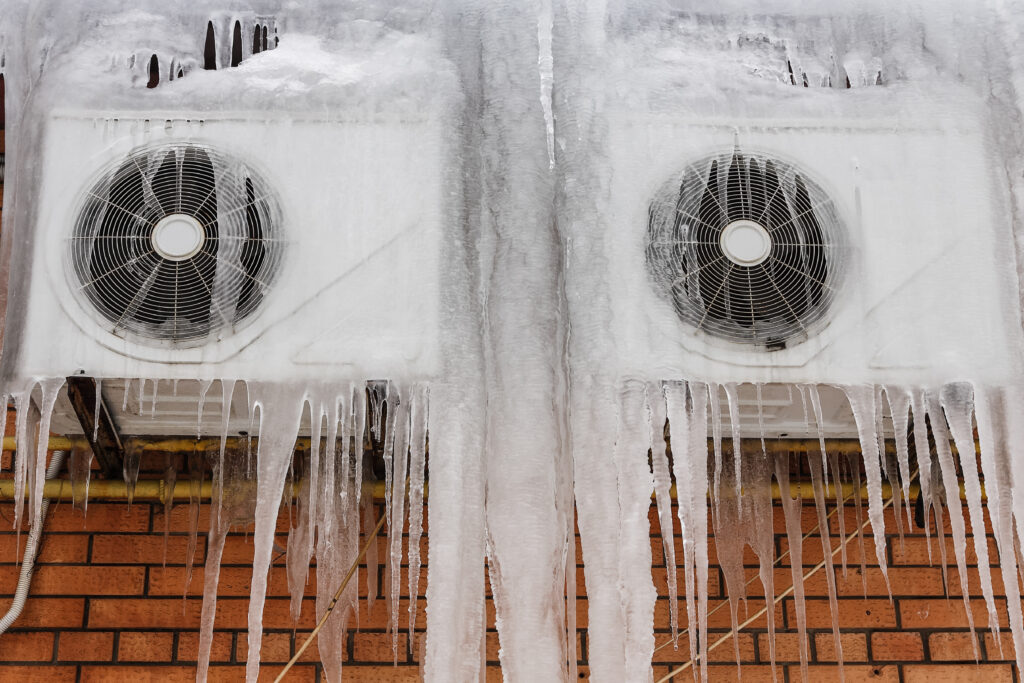Steps to Take If My AC Pipe Is Frozen - Quick Solutions for Unfreezing
Steps to Take If My AC Pipe Is Frozen - Quick Solutions for Unfreezing
Blog Article
What're your opinions concerning Why Is Ice On My Outside Air Conditione?

Intro
Discovering that your AC pipe is iced up can be concerning, specifically during warm summer months when you rely on your air conditioning unit one of the most. Understanding what to do in such a circumstance is crucial to avoid additional damages to your cooling system and ensure your comfort inside your home.
Recognizing the Causes
Numerous elements can add to the cold of an AC pipe. Comprehending these causes can help you deal with the issue efficiently.
Lack of Airflow
One common cause of an icy a/c pipe is inadequate airflow. When the airflow over the evaporator coil is limited, it can cause the coil to go down below freezing temperature level, resulting in ice development on the pipeline.
Low Refrigerant Levels
Not enough refrigerant degrees in your air conditioner system can also cause a frozen pipe. Low refrigerant degrees can cause the stress in the system to drop, leading to the freezing of dampness on the evaporator coil.
Cold Weather Conditions
In chillier environments, freezing temperatures outside can add to the cold of air conditioning pipes. If your a/c device is not correctly shielded or if there are leakages in the ductwork, cold air can infiltrate the system, causing the pipe to ice up.
Dirty Air Filters
Filthy or stopped up air filters can limit air flow in your air conditioning system, leading to numerous issues, consisting of a frozen pipeline. It's important to replace or cleanse your air filters regularly to make sure appropriate air movement and prevent ice accumulation.
Indicators of a Frozen Air Conditioning Pipe
Acknowledging the indicators of an icy air conditioning pipeline is crucial for timely activity.
Minimized Airflow
If you discover a considerable reduction in air movement from your vents, it can show a frozen pipeline.
Ice Buildup on the Pipe
Noticeable ice build-up on the cooling agent line or the evaporator coil is a clear sign of an icy air conditioner pipeline.
Odd Sounds from the Unit
Unusual sounds, such as hissing or bubbling, originating from your AC device can indicate that there's ice present on the pipeline.
Immediate Actions to Take
When faced with a frozen air conditioner pipeline, it's necessary to act quickly to prevent additional damage to your air conditioning system.
Shutting off the AC
The first step is to shut off your air conditioning system to avoid the system from running and exacerbating the concern.
Checking for Blockages
Check the location around the indoor system for any kind of obstructions that may be blocking air flow, such as furnishings or drapes.
Defrosting the Pipe
You can use gentle methods like putting towels soaked in warm water around the frozen pipe to help thaw it slowly.
Preventive Measures
Taking preventive measures can help avoid future occurrences of a frozen air conditioning pipe.
When DIY Methods Fail
If your attempts to thaw the pipeline or address various other problems are unsuccessful, it's time to hire an expert.
Value of Hiring a Professional HVAC Technician
A licensed HVAC service technician has the know-how and tools required to detect and repair issues with your air conditioner system safely and effectively.
Routine Maintenance Checks
Schedule routine upkeep get in touch with a professional HVAC professional to guarantee that your air conditioner system is running effectively.
Transforming Air Filters
Frequently change or cleanse your air filters to prevent airflow restrictions and preserve ideal efficiency.
Protecting Exposed Pipes
If your air conditioner pipelines are revealed to cool temperature levels, take into consideration shielding them to stop cold throughout cold weather.
Looking For Professional Help
If DIY techniques fail to resolve the concern or if you're not sure regarding how to continue, it's ideal to seek aid from a certified HVAC specialist.
Conclusion
Managing a frozen air conditioner pipeline can be an aggravating experience, but recognizing exactly how to react can assist decrease damage and recover comfort to your home. By comprehending the reasons, recognizing the indicators, and taking prompt action, you can efficiently deal with the problem and protect against future occurrences.
Frozen AC Line: Why It Happens & What To Do About It
A frozen AC line can be a rather peculiar sight in a place like Phoenix, Arizona where nothing ever freezes. In this post, we’ll discuss what makes an air conditioner line frozen – and what you can do about it.
Dirty Air Filters
Did you know that you should be cleaning or replacing your air filters on a monthly basis? Failing to do this can result in airflow issues that, in turn, cause your evaporator coils and lines to freeze over. You’ll notice a buildup of ice on both components, although the buildup on your pipes will, of course, be more evident unless you open your air condition up to reveal the coils.
What To Do About It
Give your air filter a good cleaning if it’s reusable. If not, replace the filter outright. Next, switch your air conditioner’s fan setting on and leave it there for 2-3 hours. This will draw warm air in, helping to thaw your evaporator coil. You can also check out this article for some tips on cleaning the coils themselves if you’d like to speed the process up. Before you switch the unit back to its normal state, make sure the supply vents are completely unobstructed and free of dust or other debris.
If you keep having this issue even after replacing your filters regularly, contact a local HVAC repair company and have them inspect your evaporator coil, ductwork, and any other components that may be at fault. If you live in the Phoenix, Arizona area, give American Home Water and Air a call.
Low Refrigerant Levels/Leakage
What To Do About It
Contrary to what air conditioner “recharge” companies often tell their clients about refrigerant, it should never need to be simply refilled. You see, refrigerant runs in what experts refer to as a “closed loop.” Refrigerant really shouldn’t be leaving that loop. If it is, you’ve got a leak.
Paying someone to come and pump more refrigerant into your system (aka “recharge” it) isn’t the solution. Doing that will simply kick the can down the road. Besides, refrigerant leaks can be harmful to the environment and people in your home.
Rather, you need to take care of the leak with the help of a technician. Check out this article for some more information about dealing with air conditioners that are leaking refrigerant. Before you contact a technician, switch your thermostat to the off position. Then, switch the fan setting on and let it run for 2-3 hours so the unit can thaw.
Improper Temperature Setting
Improper temperature settings can also cause a drop in your air conditioner’s pressure. What many people don’t realize is that air conditioners are actually designed to run when temperatures have fallen above roughly 60 degrees Fahrenheit. If you run the unit when it’s cold outside, you’ll run into many issues, including frozen components.

We hope you enjoyed our piece on Have a Frozen AC Line? Here’s How to Fix It. Thanks a ton for finding the time to read our piece of content. Sharing is nice. Who knows, you may be helping someone out. I recognize the value of reading our article about Have a Frozen AC Line? Here’s How to Fix It.
Call Today Report this page